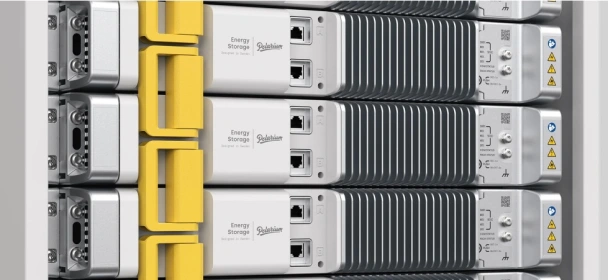The EE Times Green Engineering Summit will be held from September 13-15, 2022. The summit’s goal was to discuss the current situation, the existing problems, and the direction many industries are working on technology that will reduce our carbon footprint see in the future. The focus was on renewable energy production, energy storage, Wide Band Gap semiconductors (WBG), research and development, real-time agriculture control, environmental monitoring, and modeling. This article summarizes Dr. Henrik Lundgren’s presentation, Senior Battery Technologist at Polarium. Polarium, a Swedish manufacturer that produces energy storage systems for telecom, industrial, and commercial applications, gave a presentation entitled “How Lithium Battery Technology Is Powering Sustainable Development.”
Dr. Lundgren highlighted that batteries are used in many everyday applications, such as mobile electronic devices. This dependence will only increase as we move towards a more sustainable, greener future. Three main application areas are:
- 5G communication networks/devices. It is expected to grow 81 times in the next decade. This is due to the increased connectivity of people, appliances, switches, and monitoring devices. This will lead to a greater need for energy storage, both for powering these devices and charging them for mobile applications. The data center servers needed to power these networks also need batteries.
- Electric Vehicles (EVs). Electric Vehicles have been increasing as the world shifts away from fossil-fuel-powered transportation. Batteries and their charging infrastructure are critical components of this transition. As costs decrease, estimates indicate that EV usage will increase by a factor of 230 in the next decade.
- Renewable energy systems. Energy storage systems capture this energy at night when it is abundant and allow its use when needed. Batteries are essential for large-scale power plants, microgrids that generate their electricity, and homes with solar panels. Solar and wind energy production is expected to grow fivefold between now and 2035.
Polarium’s product range is centered around lithium-ion (LIB) batteries. Figure 1 is an example.
Below are some of the advantages that LIBs have over lead-acid batteries.
- Lithium is the lightest metal known and has the greatest electronegativity (3.05 V)/reduction potential. This makes it a highly desirable material for batteries. The energy density for LABs is around 30 Wh/kg. This is about 1/10 the of LIBs. This translates into a LIB module with the same performance as a LAB (rated voltage and capacitance) but weighs and is about 1/3rd the size of a LAB.
- LIBs tolerate a more significant discharge than LABs (95 versus 50%). LABs also have a stronger relationship between battery capacity and discharge current. This means that LABs will deliver less power at higher currents than their rated capacity. In LIBs, this relationship is flatter.
- LIBs have a longer cycle life than LABs. LABs optimized for cyclic usage cannot compete. LIBs can endure 6000 cycles and have a calendar life of 15 years. This is much more than can be achieved by LABs. This can offset the higher cost of LIBs.
- LIBs can tolerate higher temperatures than LABs (140F instead of 80F), requiring less cooling.
- LIBs are more efficient at calculating turnaround charges than LABs (97 versus 75%)
- LIBs have other advantages, such as a faster charge time and a longer time between charges. They also have a 3.7 V cell voltage compared to 2.0 V.
The electrolyte is usually an organic solvent, such as 6. As discussed below, the material and composition of the electrodes can vary to achieve the desired properties.

